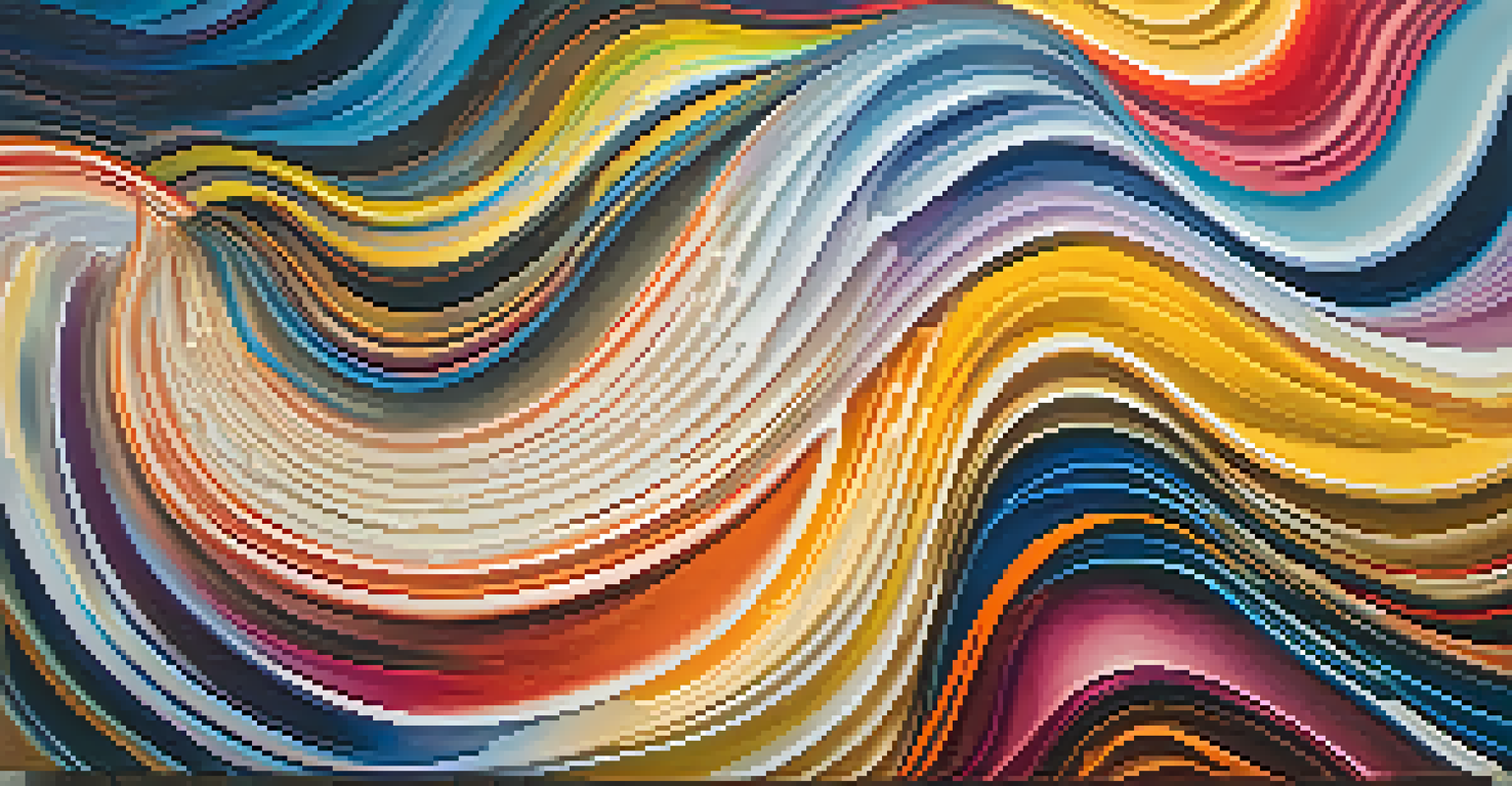The Science Behind Synesthesia: Hallucinogens' Role Explained

What is Synesthesia? A Brief Overview
Synesthesia is a fascinating neurological condition where stimulation of one sensory pathway leads to automatic experiences in another. Imagine tasting colors or seeing sounds – that's synesthesia in action. While it might sound unusual, it's a real phenomenon experienced by a small percentage of the population, often described as a blending of the senses.
Synesthesia is a condition in which one sense is simultaneously perceived as if by one or more additional senses.
Those with synesthesia might perceive numbers as having specific colors or associate certain sounds with particular tastes. This unique cross-wiring in the brain opens up a whole new world of sensory experiences that most people don’t encounter. Understanding synesthesia helps us appreciate the complexity of human perception.
Scientists believe synesthesia arises from increased connectivity between sensory areas of the brain. By exploring these neural pathways, researchers can gain insights into how our brain processes different types of information, highlighting the intricate relationship between sensory experiences.
How Hallucinogens Alter Perception
Hallucinogens, like LSD and psilocybin, are substances known to profoundly alter perception, mood, and cognitive processes. They can create vivid visual and auditory hallucinations, leading users to experience reality in unique ways. This alteration of perception has made hallucinogens a topic of interest among researchers studying consciousness and sensory processing.

These substances interact with serotonin receptors in the brain, which play a key role in regulating mood and perception. As a result, they can enhance sensory experiences, making them richer and more complex. For some users, this heightened perception can mimic aspects of synesthesia, where sounds may elicit visual images or colors.
Understanding Synesthesia
Synesthesia is a neurological condition where stimulation of one sensory pathway leads to automatic experiences in another, highlighting the complexity of human perception.
It's important to note that while hallucinogens can induce synesthesia-like experiences, these effects are temporary and depend heavily on the individual's mindset and environment. This makes the study of hallucinogens particularly intriguing, as researchers seek to understand how these substances influence sensory perception.
The Link Between Synesthesia and Hallucinogens
Research suggests that there may be a connection between synesthesia and the use of hallucinogens. Some studies have found that individuals who experience synesthesia may report intensified sensory experiences when using these substances. This overlap raises questions about the underlying mechanisms of both phenomena.
The psychedelic experience can be a doorway to enlightenment or a mirror of your own psyche.
For instance, individuals with synesthesia might be more likely to experience profound sensory distortions when under the influence of hallucinogens. This could be attributed to their already heightened sensory awareness, making them more susceptible to the effects of these substances. It's a fascinating intersection that invites deeper exploration.
Moreover, understanding this link can provide insights into how the brain processes sensory information. It could potentially lead to therapeutic applications, where inducing synesthesia-like experiences through controlled hallucinogen use might help individuals with sensory processing disorders.
Neuroscience Behind Synesthesia and Hallucinogens
From a neuroscience perspective, both synesthesia and hallucinogens challenge our traditional understanding of how senses interact. Synesthesia is thought to arise from unusual neural pathways, while hallucinogens temporarily alter the brain's wiring to create new sensory connections. This similarity suggests that both may shed light on the brain's complexity.
Functional MRI studies have shown that the brains of synesthetes exhibit increased connectivity between sensory regions. Similarly, hallucinogen users show altered brain connectivity patterns that may lead to synesthetic experiences. This research indicates that our sensory systems are more adaptable than previously thought.
Hallucinogens and Perception
Hallucinogens like LSD and psilocybin can alter perception and create sensory experiences that mimic synesthesia, providing insights into consciousness and sensory processing.
By studying these phenomena together, scientists hope to unravel the mysteries of perception and consciousness. Understanding how synesthesia and hallucinogens affect the brain could lead to new approaches in treating various mental health conditions and enhancing cognitive abilities.
Potential Therapeutic Benefits of Hallucinogens
In recent years, there has been a resurgence of interest in the therapeutic potential of hallucinogens. Research indicates that substances like psilocybin may help treat conditions such as depression, anxiety, and PTSD. These benefits could stem from the profound changes in perception and thought patterns induced by these substances.
For individuals with sensory processing disorders, the temporary induction of synesthesia-like experiences could offer therapeutic avenues. By enhancing sensory integration, hallucinogens may help individuals better navigate their environments and improve their overall quality of life. This is an exciting area of research that bridges neuroscience and mental health.
However, it's essential to approach this topic with caution. While the potential benefits are promising, further research is needed to understand the implications fully. Ensuring safe and controlled environments for these experiences is crucial in harnessing the therapeutic potential of hallucinogens.
Challenges and Risks of Hallucinogen Use
Despite the promising potential of hallucinogens, there are significant challenges and risks associated with their use. Not everyone responds positively to these substances, and some may experience negative effects, including anxiety or paranoia. It's crucial to approach hallucinogen use with caution and awareness of individual variability.
Moreover, the legality and regulation of hallucinogens vary widely across the globe. This can lead to unsafe practices and unregulated environments where individuals may not receive proper guidance. Education about safe use and potential risks is vital to ensure that those interested in exploring these substances do so responsibly.
Therapeutic Potential of Substances
Research suggests that hallucinogens may have therapeutic benefits for mental health conditions and sensory processing disorders by enhancing sensory integration.
Finally, while the connection between synesthesia and hallucinogens is intriguing, more research is needed to establish clear guidelines for therapeutic use. Understanding the long-term effects and potential risks is essential for integrating these substances into mental health treatments.
Future Research Directions in Synesthesia and Hallucinogens
As interest in the relationship between synesthesia and hallucinogens grows, future research will likely focus on understanding the underlying mechanisms of both phenomena. Researchers are eager to explore how these substances can induce synesthetic experiences and what that means for our understanding of perception.
There is also a need for more extensive studies examining the therapeutic applications of hallucinogens in individuals with synesthesia or sensory processing disorders. This could lead to groundbreaking developments in mental health treatment, providing new avenues for those who struggle with sensory integration issues.

Ultimately, the intersection of synesthesia and hallucinogens presents a rich field for exploration. As we delve deeper into the complexities of the human brain, we may uncover not only the secrets of perception but also transformative approaches to enhance well-being and mental health.